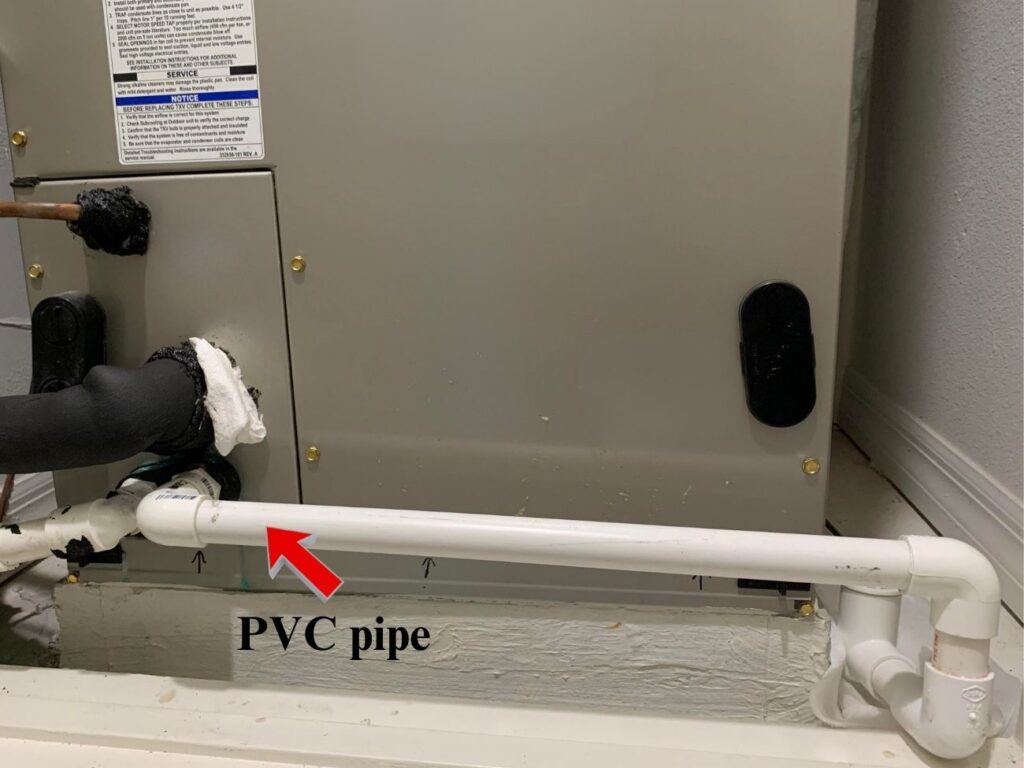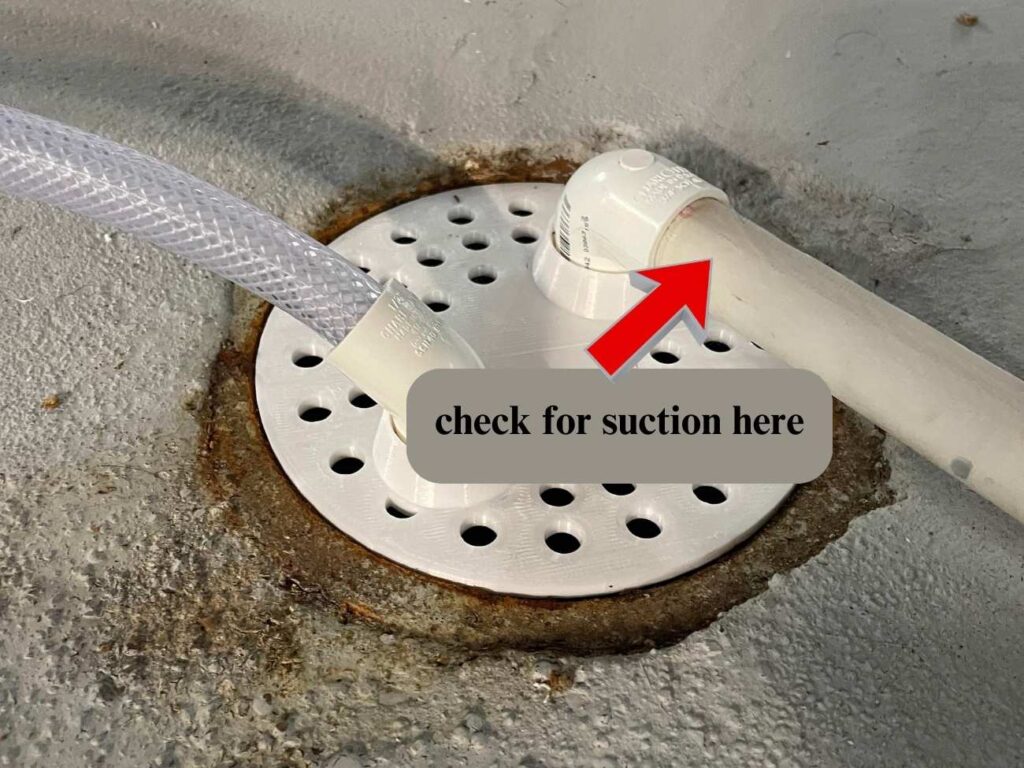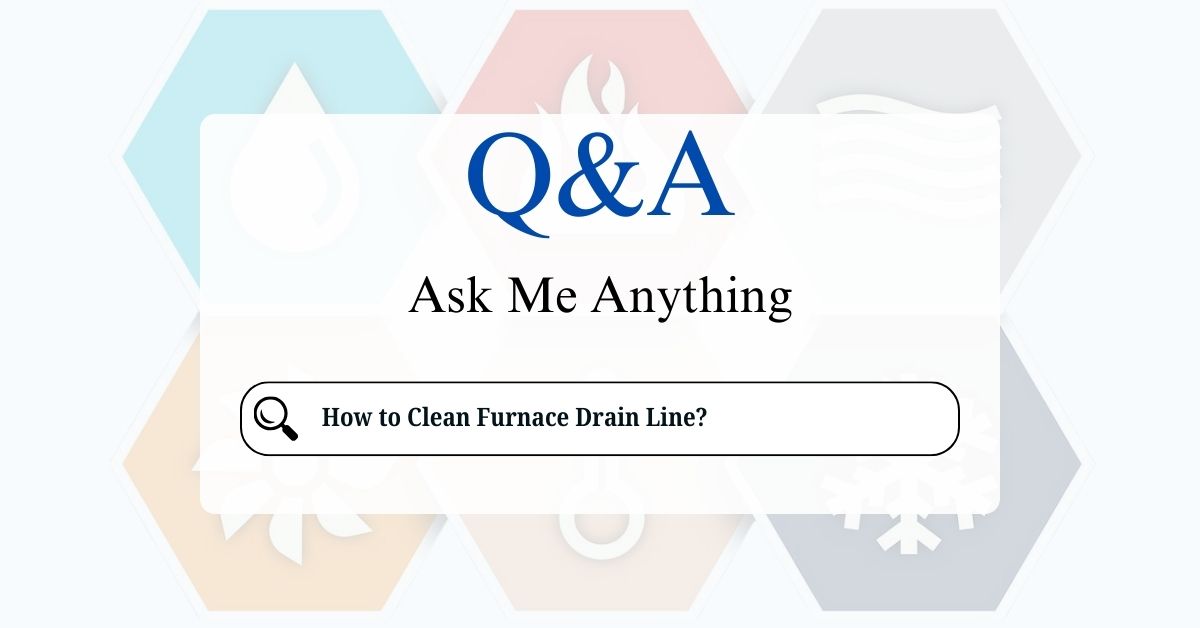Your furnace works hard to keep your home warm, and a key part of its operation involves dealing with condensation. This condensation is collected and drained away through a drain line. Over time, this line can become clogged with algae, mold, dirt, or other debris, leading to potential water damage and reduced furnace efficiency. This guide will walk you through the simple steps of cleaning your furnace drain line, helping you prevent problems and keep your system running smoothly.
Why a Clean Drain Line Matters
During the heating process, furnaces (especially high-efficiency models) produce condensation. This moisture needs to be properly drained to prevent several issues:
- Water Damage: A clogged drain line can cause water to back up, potentially leading to leaks, water damage to your flooring or surrounding areas, and even mold growth.
- Reduced Efficiency: If water isn’t draining properly, it can affect the furnace’s efficiency and performance.
- Furnace Shutdown: In some cases, a clogged drain line can trigger a safety switch that shuts down the furnace to prevent further problems.
Identifying Your Furnace Drain Line
The drain line is usually a PVC pipe (often white or gray) that extends from the furnace. It typically connects to a floor drain, a condensate pump, or an outside drain. Look for a small pipe, usually ¾ inch in diameter, near the bottom of your furnace.

Tools and Supplies You’ll Need:
- Wet/Dry Vacuum: This is the most effective tool for clearing drain lines.
- Bucket or Container: To catch any water that might spill during the cleaning process.
- Vinegar or Bleach (Optional): To help disinfect and prevent future clogs.
- Funnel (Optional): To make pouring liquids into the drain line easier.
- Wire Brush or Pipe Cleaner (Optional): For scrubbing stubborn debris.
Cleaning Your Furnace Drain Line: Step-by-Step Guide
1. Turn Off the Furnace
Before you begin, turn off the power to the furnace at the breaker box or the furnace’s power switch. This is a crucial safety step.
2. Locate the Drain Line Opening
Find the opening where the drain line exits the furnace. This is usually a small fitting or a short section of pipe.
3. Inspect for Standing Water
Check for any standing water in the drain pan or around the drain line opening. If there’s a significant amount of water, you’ll want to carefully soak it up with towels or a wet/dry vacuum before proceeding.
4. Use a Wet/Dry Vacuum
This is the most effective method for clearing clogs. Attach the hose of your wet/dry vacuum to the drain line opening, creating a tight seal if possible. Turn on the vacuum and let it run for several minutes. This should suck out any clogs in the line.
5. Check for Suction
While the vacuum is running, check for suction at the end of the drain line (where it empties). If you feel strong suction, the line is clear. If you don’t feel suction, there’s likely a stubborn clog.

6. Try the Vinegar/Bleach Method (For Stubborn Clogs)
If the vacuum doesn’t clear the clog, you can try using vinegar or bleach.
- Vinegar: Pour about a cup of white vinegar into the drain line opening using a funnel if needed. Vinegar is a natural disinfectant and can help break down algae and mineral deposits. Let it sit for about 30 minutes, then flush the line with water.
- Bleach (Use with caution): If vinegar doesn’t work, you can try a diluted bleach solution (1 part bleach to 10 parts water). Pour about a cup of the solution into the drain line and let it sit for about 15-20 minutes. Be sure to wear gloves and eye protection when working with bleach and avoid splashing. Flush the line thoroughly with water afterward.
Never mix bleach and vinegar!
7. Flush the Line with Water
After using the vacuum or cleaning solutions, flush the drain line with water. You can use a garden hose or a pitcher to pour water into the drain line opening. This will help remove any remaining debris and ensure the line is clear.
8. Check for Proper Drainage
After flushing the line, check to make sure water is draining freely from the end of the drain line.
9. Reconnect Any Disconnected Components
If you disconnected any parts of the drain line during the cleaning process, make sure to reconnect them securely.
10. Turn the Furnace Back On
Once you’re satisfied that the drain line is clear, turn the power back on to the furnace at the breaker box or the furnace’s power switch.
To prevent future clogs, consider these tips:
- Annual Cleaning: Clean your furnace drain line at least once a year, preferably before the start of the heating season.
- Regular Inspections: Periodically check the drain line for any signs of blockage or leaks.
- Proper Slope: Ensure the drain line has a proper downward slope to facilitate drainage.
If you’re uncomfortable working with plumbing or if you’ve tried these steps and the drain line is still clogged, it’s best to call a qualified HVAC technician or plumber. They have the expertise and tools to clear stubborn clogs and diagnose any other potential problems.
By following these simple steps, you can keep your furnace drain line clean and prevent potential problems. Regular maintenance will help ensure your furnace runs efficiently and keeps your home warm and dry all winter long.






